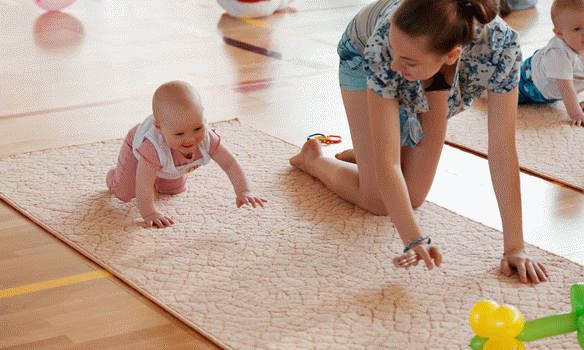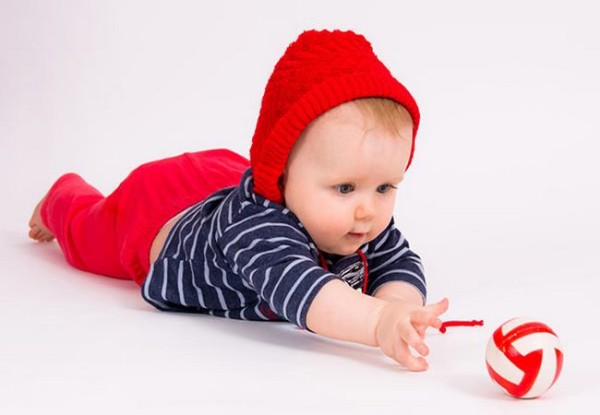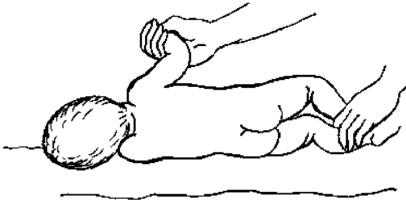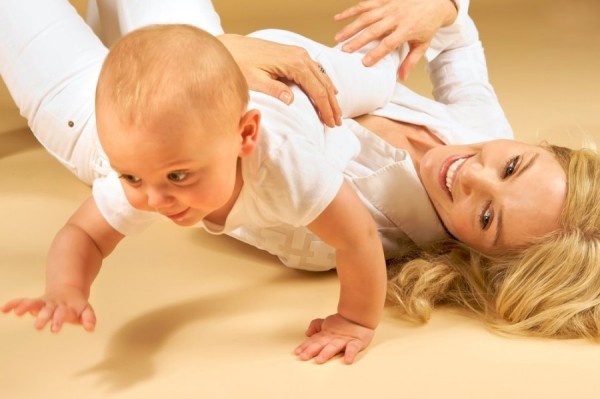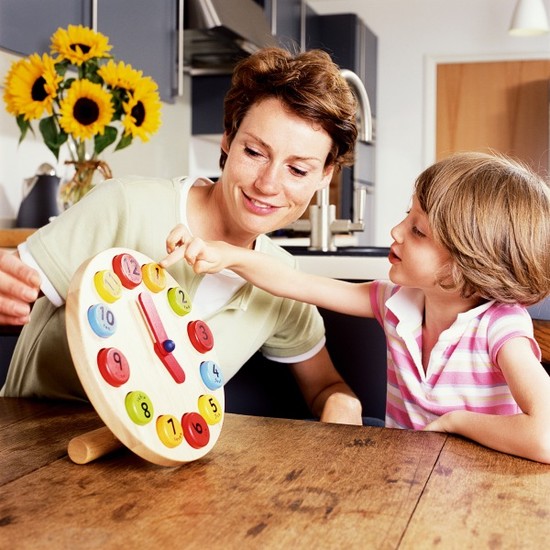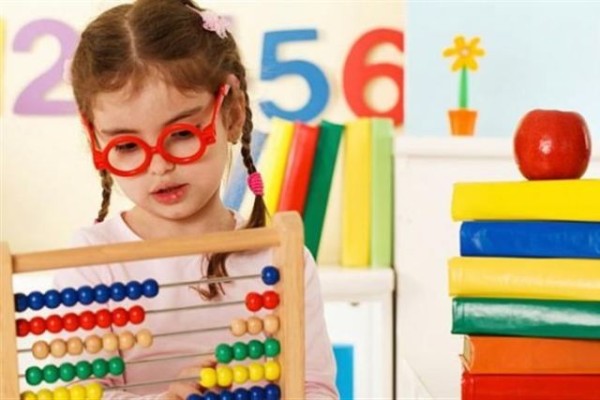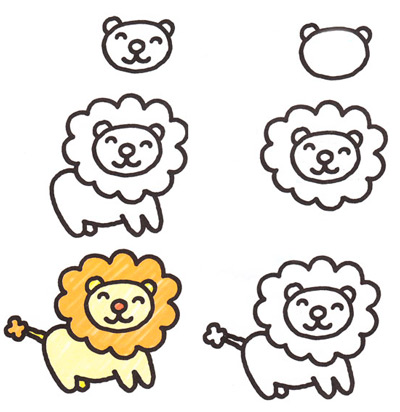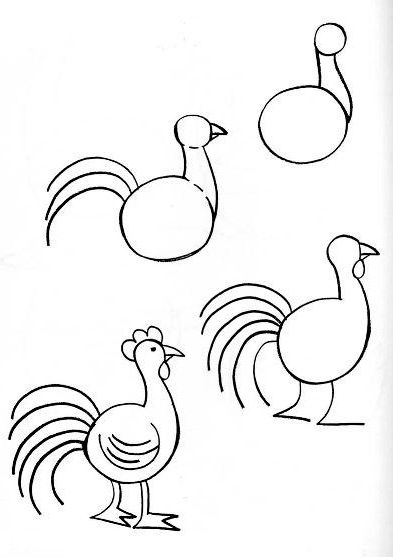"First Experience": How to Teach Your Child the First Skills
The first three years of a baby's life are the most important period when basic knowledge and skills are laid. The toddler absorbs everything like a sponge. New discoveries should help him to make the closest people - mom and dad. How to teach a child to crawl and walk, read and draw - the answers to these and many other questions can be found in the article.
Content
- How to teach a child to crawl
- How to teach a child to speak
- How to teach a child to walk
- How to teach a child to sit
- How to teach a child to fall asleep
- How to teach a child to roll over
- How to teach a child to hold
- How to teach a child to eat
- How to teach a child to watch
- How to teach your child the letters
- How to teach a child to count
- How to teach a child to draw
How to teach a child to crawl
Crawling can be considered one of the first important skills of the baby, because having mastered the technique of moving on all fours, the baby learns a new world with its wonderful discoveries and a vast field for activity.
Using four points of support when moving, the little researcher trains several muscle groups at once - the shoulder girdle, back, legs and arms, learns to coordinate the body and maintain balance. Baby now it is not necessary to use tears and screams in order to explain to your mother your desires in this way, to ask for your favorite toy or a bottle. Now he is able to do it on his own, while becoming less dependent on his parents, who, in turn, have more free time.
Pediatricians around the world claim that the psychomotor development of children occurs individually. The average age of "sliders" is 6-10 months. Someone makes attempts to get up on all fours as early as 4 months, someone generally bypasses this stage. However, do not underestimate the overall benefits of this skill, because by skipping it, the child runs the risk of getting too high a load on the spine - his muscle corset will be insufficiently formed. That is why it is important to stimulate the baby to crawl. Here are some simple ways:
- Put a bright object in front of the baby - he will be interested in it and, possibly, try to get there. Mom and Dad can help him with this by alternately moving the arms and legs.
- If the baby is already 6 months old, you can begin to strengthen the muscles with the help of bending and spreading the legs and arms, massage, exercise on fitball, as well as the "wheelbarrow" exercise. From the position on the hands and knees, the child is gently lifted his legs, while he tries to "walk".
- You can teach how to stand on all fours by twisting the roller out of the blanket and placing the baby on them with the tummy down. In this case, his arms and legs will be free, and the baby will want to lean on them.
And remember - do not "push" too much on the child in an effort to teach him to crawl. The child will do this at the moment when he feels strength in himself. But anyway, exercise will be very beneficial.
How to teach a child to speak
It is a great misconception for parents to think that it is necessary to teach a child to speak when he has mastered such motor skills as crawling, independent sitting and walking. The first year of your child's life is a very fertile time when the baby absorbs everything like a sponge. Speech development is directly related to auditory, visual and tactile perception. Therefore, exercises can be started from the first days of life:
- Make sure that the child is surrounded by bright, beautiful objects that he will look at while lying in his crib.
- Develop fine motor skills in your hands. This will help finger gymnastics and finger games ("Magpie-white-sided", "There is a horned goat" and others).
- For the grown up "slider", name the things that he sees at home and on the street. Do not neglect also verbs and properties of objects and phenomena.
- As you speak sounds and words, look directly at the child so that he can see your articulation.
- Teach the baby onomatopoeia ("How does the cow say?", "How is the car going?", Etc.).
- Try not to react to sign language when your toddler is one year old. Ask not to point your finger, but to say "give", "must", etc.
- Read books to children more often, recite poems, sing songs. This contributes to the accumulation of passive vocabulary.
How to teach a child to walk
Everyone parent looking forward to the moment when the little fidget "sinks" for a walk without support, with his legs. If you see that the child is already ready for new exploits, having perfectly mastered the ability to crawl, sit and move along the support, you can safely start preparing for independent walking:
- The beginning of the beginnings is walking with one or two hands. To make the process more enjoyable, give the little one a rolling toy to lean on when taking the first steps.
- Do not teach children to walkers - this is not only unsafe for him, but can also be the reason for delayed motor development.
- Be sure to insure the crumb from falls. One unsuccessful "landing" - and the kid will be afraid to master this skill in the near future. When teaching on the street, it is permissible to use special safety "leashes".
- Attract the child's attention with unusual bright objects, while positioning them so that he has to follow them with his legs.
- In order for the future pedestrian to form a positive example, walk with him in playgrounds, in parks and squares, where he can see kids running.
How to teach a child to sit
Most often, babies learn to sit without support at about 5-7 months. If the young researcher is already 6 months old, at a routine examination, the pediatrician will most likely ask whether the baby has mastered this skill. If not, do not panic and exert any influence on the child in this matter. In a hurry to compare your baby's skills with standards and eliminate this "gap" in motor development, you run the risk of creating a dangerous load on the baby's fragile spine, which can have dire consequences in the future. Tips to help you prevent this from happening:
- you do not need to sit down the child, for example, with pillows if he is not yet ready to sit down on his own;
- get a consultation masseur- it is possible that the baby will have a decreased or increased muscle tone, which prevents the timely development of skills;
- Parents can easily perform the simplest exercises to strengthen the muscles of the neck, spine, abs, arms and legs at home using fitball exercises, rubbing, and elementary massage movements.
How to teach a child to fall asleep
Learning to fall asleep in a separate bed on your own can be a hassle for parents, especially if they have put off solving this issue for a long time. If the little capriculum is already more than six months old, it is unlikely that he will quickly give up in the struggle for a warm place near mom. The matter will be much easier when, even before the baby is born, you are firmly determined that you will sleep separately. Then the following recommendations will come in handy:
- From the very beginning, leave the baby in the crib more often, avoid constant motion sickness in your arms. Stay close when falling asleep to keep your baby safe.
- During wakefulness, the baby should also be in its sleeping place for some period. To make him interested, install a special children's mobile with spinning figures and sound effects.
- If the baby is crying in the cradle, first try to calm him down without picking him up - stroke, sing a song. It didn't work out - shake it, but as soon as it calms down, put the crumbs down again.
- Put your baby to bed at the same time every day.
- It may not be possible to teach a child to fall asleep right away. But, believe me, patience, your love and tenderness will do their job over time.
How to teach a child to roll over
Turning from back to stomach and vice versa - it would seem that what could be easier? For a kid, this is a whole discovery! Discovering your new abilities and body capabilities. Normally, a baby should be able to roll over at the age of 3-4 months. And this is exactly the case when you can and should teach and push the child to develop a skill. Perhaps your child is physically quite ready to master this skill, he is simply lazy or does not understand the "mechanism" of the coup.
You can help the baby by studying a few simple manipulations:
- Lay the baby on the tummy more often - this helps to strengthen the muscles of the neck, back and abs.
- Take the baby's legs and, in the supine position, alternately bring and spread them. Enough 10 repetitions daily. You can work with pens in the same way.
- Show your child a bright rattle and place it next to it. Having become interested, he will want to take the object in his hands, and for this he will have to roll over on his stomach.
- Give your baby your fingers, grabbing, he should slightly raise the body and head from the surface. Also, gently return it to its original position. Repeat several times.
How to teach a child to hold
How to teach a child to hold a spoon correctly - this question can be asked from the very moment when a little gourmet's diet begins to be supplemented with new dishes - mashed potatoes from white vegetables are usually used as the first complementary food. It is then that the child begins to realize the purpose of a new object for him - a spoon.
At first, mom will need a lot of endurance and patience, because, most likely, the baby will perceive the cutlery as a toy, a new kind of entertainment. It is worth stopping such actions, the spoon should be a spoon, and not a means for throwing food or scratching the first teeth.
At what age this skill is taught, parents decide, based on the physical and psycho-emotional state of the baby. As an introduction, the most appropriate age is 6-7 months, when the child will be able to take the object consciously, and not reflexively.
How to teach a child to eat
Having learned how to hold a spoon, the child gradually understands what exactly it is needed for, and in a year he may well eat several tablespoons of mashed potatoes or even broth. If you're unsure of where to start self-food training, try these tips:
- The first rule is that the spoon must be safe, it is best if the material for it is plastic or silicone.
- Your child should be able to hold the back well, since you need to eat while sitting, preferably in a special chair.
- The child should have a positive personal example in front of his eyes - during a family meal, sit him next to the common table.
- Restless kids in the learning process, for sure, will get very dirty, in no case should they be scolded for this.
- Support toddler- patiently correct his movements, but do not rush, because he is only learning to coordinate his movements.
- Save your young gourmet from external stimuli - no toys or TV!
- Start with your favorite crumbs, feed the rest yourself.
- Observe the diet.
How to teach a child to watch
In children's perception, as a rule, time does not exist. Their life, even from the womb, obeys biorhythms, thanks to constantly repeated actions - sleep, feeding, walking, etc.
It makes sense to teach a child to watch when he knows the numbers up to 60. In addition, it should be remembered that a child has a sense of time about 6-7 years old. Of course, you can familiarize him with the device of the clock, the dial much earlier, and watch the hands together. Then try adding the numbers, adding five (minutes) each time - 5, 10, 15, 20, etc.
Get a watch with a dial and show the appointment of the minute and hour hands.
If possible, play with the arrows - move them by a different number of divisions. It is important to teach your child to compare the time on the dial with an electronic clock.
Make a watch with arrows out of cardboard and colored paper if desired. Let the kid draw the hands and the main divisions of the dial on his own.
How to teach your child the letters
Opinions vary widely among experts on when to start teaching literacy. Some argue that early development will only "spur" natural talents child. Others believe that such a tactic is not only useless, but also harmful to the baby's psyche.
But still, the majority advocate timely training, and this is about 5-6 years, but acquaintance with the alphabet can begin much earlier. Of course, it makes no sense to sit the crumbs down at the alphabet, so the best way is a game form.
From birth, babies can and should be read aloud.
For a one-year-old fidget, you can purchase blocks with colorful drawings, letters and numbers and start showing at least a few for a start.
In two years, special cards are used - we first study the vowels, clearly pronouncing the sound, then we name several words starting with this letter.
A three-year-old toddler will be able to draw or sculpt the desired letter. Play hide and seek with letters - put the cards in different places, as soon as the child finds the letter, names it and a few words that include it.
At 4 years old, the musical alphabet will be relevant.
5 years old - at this age you can buy the first ABC book, just choose the one in which not letters are named, but sounds, so learning to read will be easier.
6 years is a period when it will not be difficult for a child to learn the alphabet, in parallel with this, conduct reading and writing classes.
How to teach a child to count
Your baby already 2 years old? It's time to introduce him to numbers and counting. Again, we note that for this it is not at all necessary to sit the child for boring books. Learn - by playing on the way to the playground or kindergarten. Up to 10 is best to learn to count on your fingers.
Count trees, cars, houses - whatever you like, the main thing is that the baby is interesting and easy to remember. On the way to the store, explain what you are planning to buy, while curling your fingers, ask the child to remind the list of products. When dividing sweets or cookies, note that the division occurs equally (2 for you, 2 for me).
After the child has mastered elementary counting, show him the numbers and explain that three apples mean this number, and two boots mean this one. This way you will avoid rote memorization.
Basic rules to follow when teaching numbers:
- Do not study more than half an hour a day, otherwise the child will get tired and lose interest.
- Be sure to repeat what you have gone through when you need to solve a more complex example.
- The digital alphabet and numbers on magnets, which will always be in front of your eyes, for example, on the refrigerator, will be a good help.
- Use counting in your daily life. Even if the kid does not yet understand the meaning of asking for two spoons or three pencils, over time he will learn it.
How to teach a child to draw
The first joint creative activities should be started as early as possible - modeling from plasticine and clay, drawing - all this develops the fine motor skills of the hands and the imagination of the child. Finger paints are designed for the youngest artists, they can be used from the moment the child learns to sit on his own. You can buy them in the store or make them at home from flour, starch, salt and food colors. Such paints and a sheet of whatman paper will give you unforgettable moments of joy, useful and creative interaction with your baby.
Later, let your child learn other art therapy tools - crayons, colored pencils, and markers. At first, he will not be able to hold them in his hands correctly, be sure to help and guide the little creator.
After child learned hold a pencil or wax crayon, show him how to draw the simplest geometric shapes - circles, squares and objects from them (house, sun, etc.). After that, paint together the result.
Be sure to praise the child, and over time he will learn to convey his emotions and impressions through the drawing.

